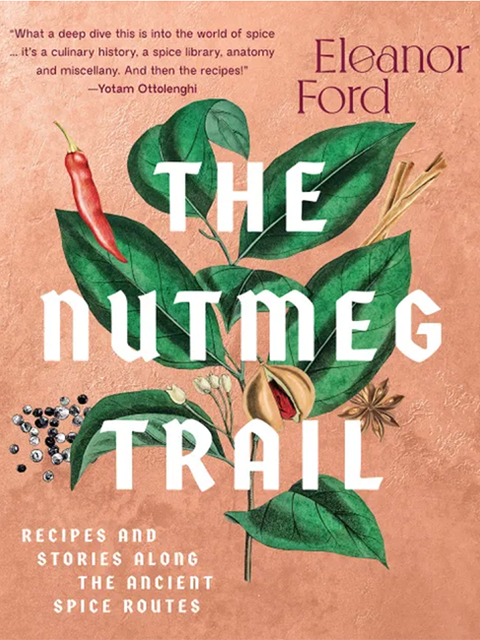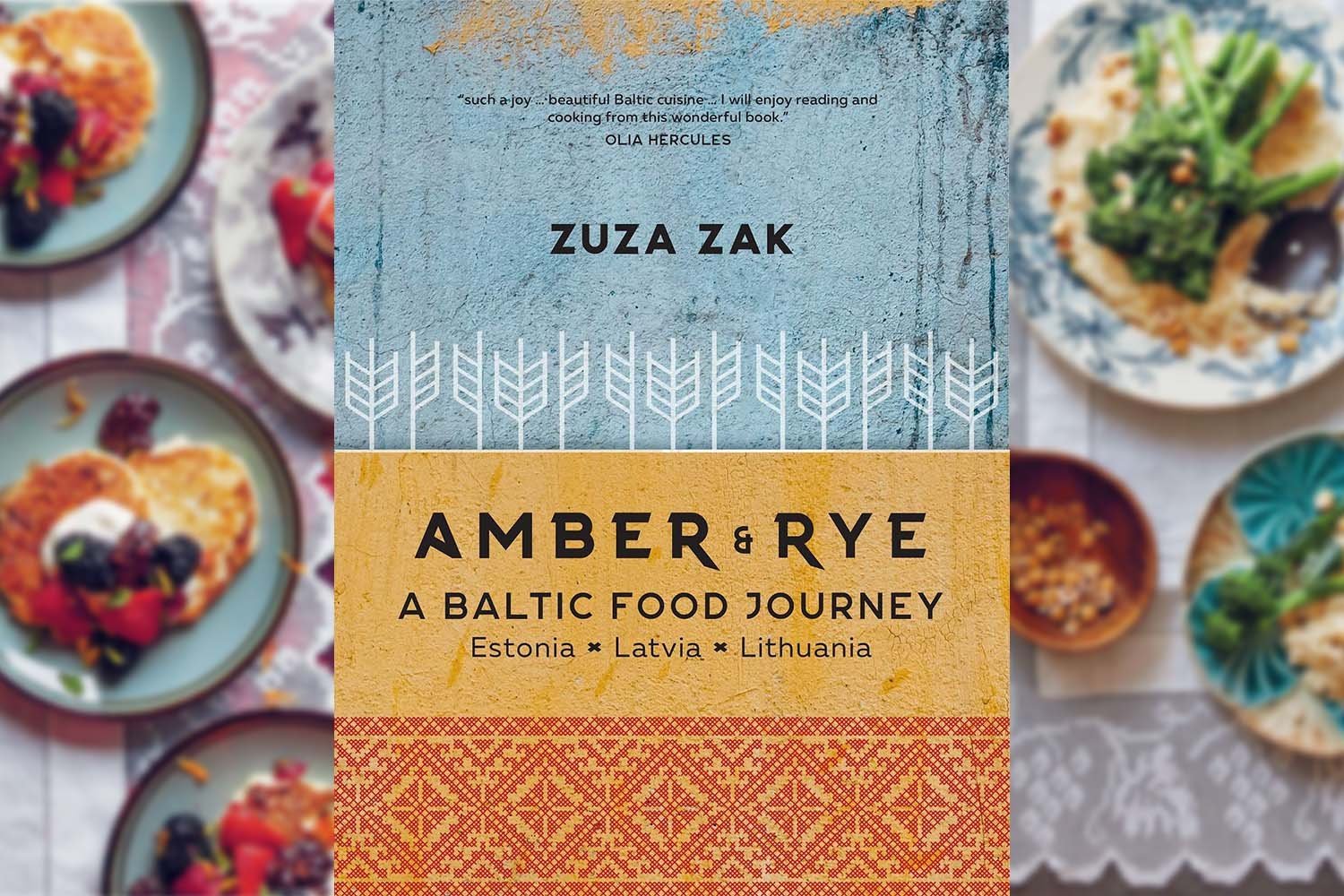Advertisement
Author Profile: Q&A with Eleanor Ford, author of The Nutmeg Trail
28 June 2022 · Author Profile
“What fascinated me was looking at the journey that flavors can take you on”
Interview: Ramona Andrews
Photographs: Ola O. Smit
Writer Eleanor Ford spent much of her childhood in Indonesia, where her father worked as an architect, which led her to fall in the love with the flavors of the region. Ford’s career as a food journalist and recipe editor has fine-tuned her detective-like skills in delving into the histories of food and culture, which she has applied to the flavors she grew up with.
Ford’s new book The Nutmeg Trail has just been released on ckbk. It is a story about spice and its history, divided into chapters that reflect the qualities of each spice. But mainly it is a book full of delicious things you will want to cook. Ford’s earlier award-winning book Fire Islands – also available on ckbk – is a culinary journey through Indonesia.
Ford spoke to ckbk about the enduring appeal of spices, how important flavor is for evoking memory, and how her writing and researching process has developed during the pandemic.
Q: How would you describe your writing and cooking processes in putting together The Nutmeg Trail and Fire Islands?
The two books had very different processes. With Fire Islands, it was a true travelogue. I was returning to Indonesia, a country I’d lived in as a child and then moved back to, to research the book. So the research was very immersive. We were living in a country, documenting food that I love and trying to discover as much as I could by meeting cooks and cooking with people from all walks of life – whether they were street vendors, home cooks, or chefs. The book took shape from my on-the-ground research.
With The Nutmeg Trail, the scope of it is far broader. It is a book following the ancient spice trails, which are the maritime routes across the Indian Ocean. It is a region I’ve been lucky enough to travel in a lot but my plans to travel further to research this book were thrown off by Covid. So, being anchored at home in London, my research by its nature had to become more academic and I think that’s what took me deeper into the history and stories of spice.

“What a deep dive this is into the world of spice,” says Yotam Ottolenghi of Ford’s new book, The Nutmeg Trail.
Q: You write about nutmeg having a bloody history and the story of the spice trade being “as bittersweet as nutmeg.” What is it about nutmeg that is so special? How did you come to focus on nutmeg for the title?
There were two reasons that reflect two sides of the story for the book. One is this powerful, sad, bloody history that nutmeg was tied up in. Spice was so sought-after in Europe in the 17th century that battles were fought between the British and the Dutch, and in the end two islands on the opposite sides of the earth were traded for each other. One was Rhun, a tiny island in the eastern Banda Sea, where nutmeg was grown. The other was Manhattan, New York. There is such power and potency behind this story, a climax of the spice trade.
But also what has been important to me in this book is documenting the more peaceful, quieter side of the spice trade that had dated from millennia before these wars. Traders ploughed the seas with spices as their commodities, and with the movement of people came a sharing of ideas – including recipes and culinary ideas – as well as languages, art, and religion. I think that nutmeg really demonstrates this as, despite the fact that it only used to be grown in these few tiny islands in the remotest part of Indonesia, it found its way into spice mixes across the world. Barely a spice blend doesn’t contain nutmeg.
Q: Tell us about growing up in Bali and Java with your family, and how that has influenced the way you understand food.
I spent my childhood split between London and a lot of time in Indonesia because my architect father was designing hotels in Java. I fell in love with the food, so different from the flavors in the UK. There’s something so evocative about flavors. Rather like scents, they bring back memories.
Q: What are some of the most delicious things you’ve tried and places you’ve been to that have influenced The Nutmeg Trail?
I find it very hard to choose favorites and that’s why I ended up grouping the chapters by flavor. If you’re in the mood for something bright and fresh, then you can turn to the Lime Leaves & Lemongrass chapter and pull out something like Indonesian Seafood Gulai, with its fresh sauce that you make with a spice paste and coconut milk, and it takes 15 minutes to make. The entire kitchen is filled with this heady fragrance. It’s so fresh and garlicky and lemongrassy and zingy. But if you want something that’s earthier with deeper flavors, then try something like the Garlic Clove Curry. The garlic cooks down into a sort of sweet slump, no longer sharp, and it melds with the earthy flavors of spice, and it’s delicious in a different way.
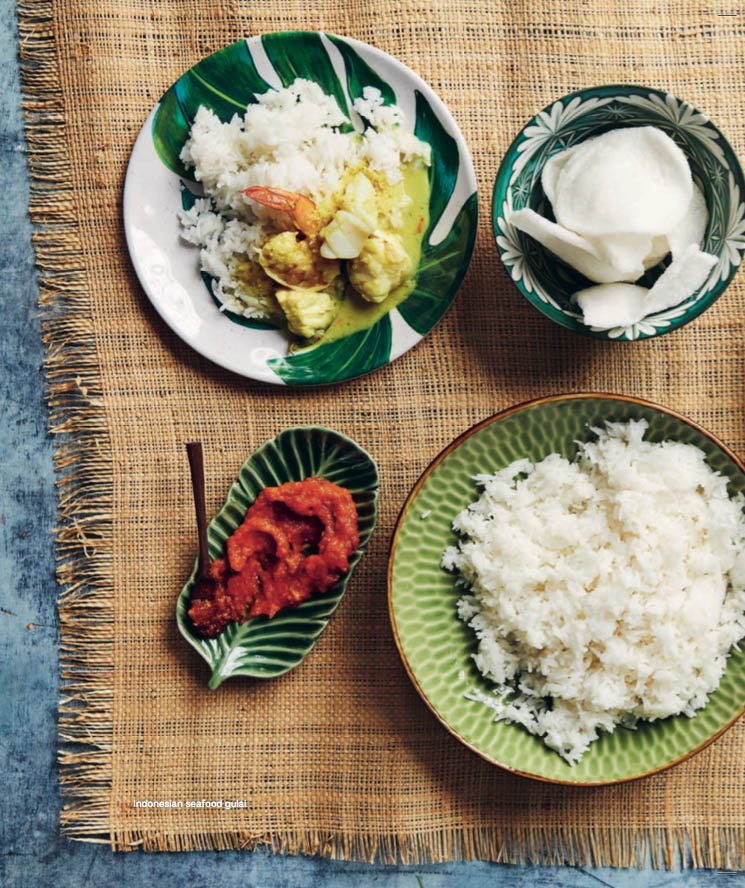
Indonesian Seafood Gulai’s spicing was influenced by Indian merchants’ links to Indonesia.
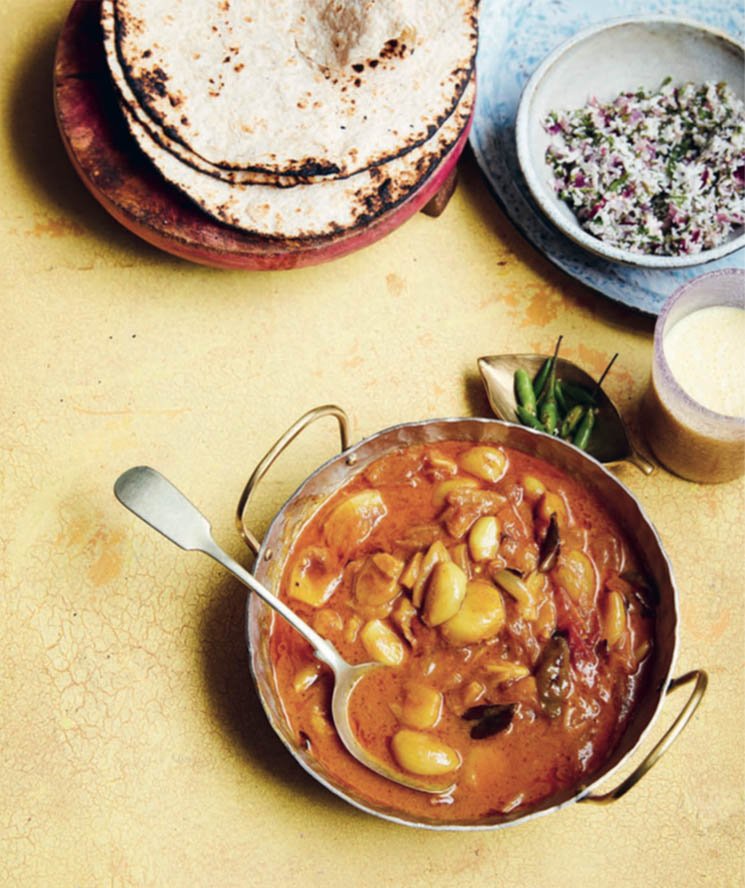
Ford’s Garlic Clove Curry is, in her words, “a real treat for garlic fiends.”
Q: In the book, you describe yourself as working as a “culinary detective, finding clues from recipe names, methods, and tastes to trace their stories and ancient links.” Can you give an example?
One of the pieces I wrote for the book is the story of kebab, looking at how this idea that started off as meat on a stick – often a campaign meal for soldiers and thought to have originated in Turkey – traveled with the Arab spice traders. You can find different versions of kebabs along the whole span of the spice trail. The same idea, but with such different flavor combinations as you hit different areas. By the time you get to Thailand, Malaysia, and Indonesia, you’re into the realms of satay.
One recipe to try is the Kebabs for Babur, lamb marinated in ginger, pepper, coriander, and cumin, bound by yoghurt to make them extra tender. The Indonesian street snack Spiced Beef Martabak is an interesting example of adaption – an Indonesian recipe with its roots in Yemen.
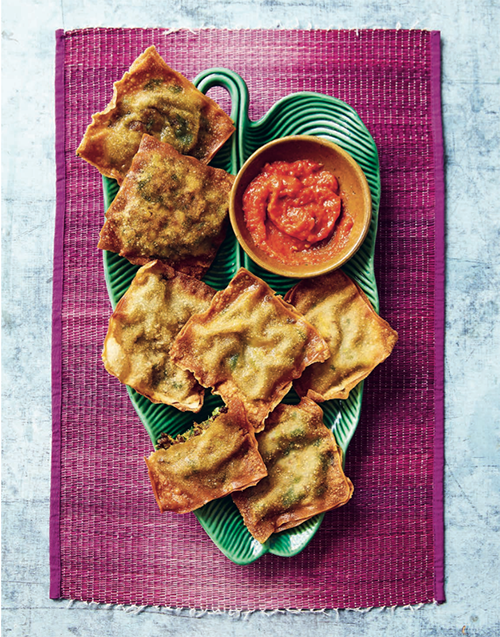
Yemen-influenced Spiced Beef Martabak from The Nutmeg Trail, an Indonesian street snack of pastry envelopes stuffed with meat.
Q: In The Nutmeg Trail you mention some lesser-known spices to seek out. Of this list, which might be particularly exciting and worth sourcing?
The first thing I’d say is that, by and large, with the recipes I tried to use and rely on the everyday spices. I think there is so much wonder in those, we don’t have to expand our collections hugely to get incredible spiced meals. But if you did want to try something unusual, one of my favorites is long pepper – elongated, catkin-like peppercorns from Indonesia and India. They are much more fragrant and pungent than black pepper – there’s almost a violet-like note to them. I think they are a very special ingredient.
Q: And, conversely, which spices do you cook with most days? What’s the essential stuff?
I think a nice recipe to pull out here is Keralan Black Pepper Chicken because it uses black pepper in a much larger quantity than we are used to. Pepper is an everyday spice for so many people in the West, but here there are two tablespoons of black peppercorns for a serving for four, so it’s really brought to the fore, alongside some of my other favorite spices: ginger, turmeric, and fennel seeds.
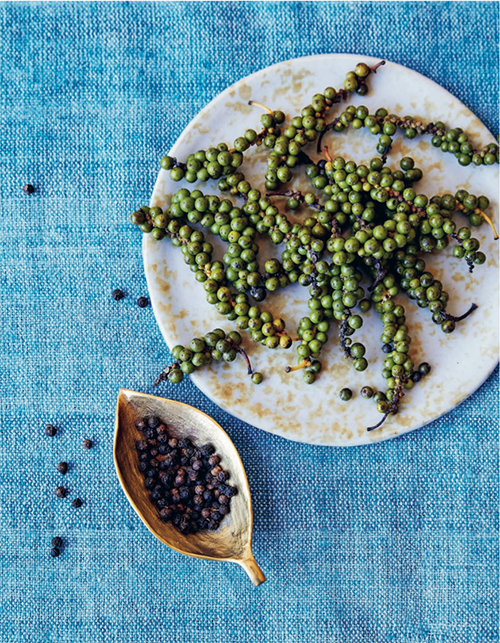
A generous serving of black peppercorns in Ford’s Keralan Black Pepper Chicken is a reminder of the potency of this everyday spice.
Q: In the book, you describe the route of the ancient spice trails as being more like a web than the straight east-to-west Silk Road conceit of Europeans: “an ever-changing web of trade, with flow in all directions.” Can you explain a bit more about that?
I think that’s an important distinction. Because often when history is told, the perspective taken can make you think of a journey that goes straight from spice forests in the east to kitchens in the west. But, of course, this was not the case. All spices require a journey because there’s no one place where spices came from. So they would travel east and west, up and down, exchanges at every port, and I think that’s an important key to why the spice routes were so powerful in their exchange of ideas as well as ingredients.
Q: What it is that interests you about the movement of spices and ideas?
What fascinates me is looking at the journey flavors can take you on. If you travel within a country or across borders, you can see the same flavors changing as they merge into a new region. I’m fascinated by that and the story it can tell about people and history, as well as about the actual dish you’re eating.
Q: How has your relationship to travel more generally changed in recent years?
I think, like everyone, my travel has slowed down considerably and it is a moment for us all to pause and reflect on the way that we travel and the way of things going forwards. I’ve been very lucky to have lived in Asia for different sections of my life and that’s given me a different jumping-off point for travel. This is a moment for change, and I’m not sure of the answer yet, but it is something to reflect on.
Q: What’s next? Are you working on another book and, if so, can you give a hint of what it’ll be about?
I can’t say too much yet, but my spice cupboard is still seeing lots of action!
Ten popular recipes to try from The Nutmeg Trail
ckbk Premium Members have digital access to the full content of The Nutmeg Trail and Fire Islands on ckbk, including every recipe and photograph.
Listen to Eleanor Ford
Ford talks to Gilly Smith about The Nutmeg Trail on the Cooking the Books podcast.
Sign up for ckbk's weekly email newsletter
Read more about ckbk authors
Advertisement

